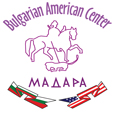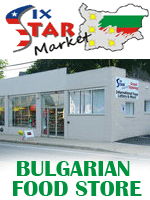| |
Although the metropolitan area of BOSTON has long since expanded to fill the shoreline of Massachusetts Bay , and stretches for miles inland as well, the seventeenth-century port at its heart is still discernible. Forget the neat grids of modern urban America; the twisting streets clustered around Boston Common are a reminder of how the nation started out, and the city is enjoyably human in scale.
Boston was, until 1755, the biggest city in America; as the one most directly affected by the latest whims of the British Crown, it was the natural birthplace for the opposition that culminated in the Revolutionary War . Numerous evocative sites from that era are preserved along the Freedom Trail through downtown. Since then, however, Boston has in effect turned its back on the sea. As the third busiest port in the British Empire (after London and Bristol), it stood on a narrow peninsula. What is now Washington Street provided the only access by land, and when the British set off to Lexington in 1775 they embarked in ships from the Common itself. During the nineteenth century, the Charles River marshlands were filled in to create the posh Back Bay residential area. Central Boston is now slightly set back from the water, separated by the John Fitzgerald Expressway that carries I-93 across downtown. The city has been working on routing the traffic underground (a project a decade in the making known as "the Big Dig"), though the monumental task won't likely be completed before 2004, much to the frustration of locals.
There is a certain truth in the charge leveled by other Americans that Boston likes to live in the past; echoes of the "Brahmins" of a century ago can be heard in the upper-class drawl of the posher districts. But this is by no means just a city of WASPs: the Irish who began to arrive in large numbers after the Great Famine had produced their first mayor as early as 1885, and the president of the whole country within a hundred years. The liberal tradition that spawned the Kennedys remains alive, fed in part by the presence in the city of more than one hundred universities and colleges, the most famous of which Harvard University actually stands in the city of Cambridge, just across the Charles River, and is fully integrated into the tourist experience thanks to the area's excellent subway system.
The slump of the Depression seemed to linger in Boston for years even in the 1950s, the population was actually dwindling but these days the place definitely has a rejuvenated feel to it. Quincy Market has served as a blueprint for urban development worldwide, and with its busy street life, imaginative museums and galleries, fine architecture and palpable history, Boston is the one destination in New England there's no excuse for missing.
The City
Boston has grown up around Boston Common , which was set aside as public land in 1634. The obvious first stop on any tour of the city, it is also one of the gems in the string of nine parks (six of which were designed by Frederick Law Olmsted Boston has grown up around Boston Common , which was set aside as public land in 1634. The obvious first stop on any tour of the city, it is also one of the gems in the string of nine parks (six of which were designed by Frederick Law Olmsted, America's foremost landscape architect) known as Boston's Emerald Necklace . Another gem is the lovely Public Garden , across Charles Street, where the two-ton swan boats ($1.50), which paddle across the main pond, are a less-than-natural, though whimsical, focal point. The visitor center - the start of the Freedom Trail - is near the tapering north end of the Common. As you stand here, facing up Tremont Street with the State House away to your left, the main shopping district, Quincy Market , and the waterfront are slightly ahead and down to the right. The modern concrete wasteland of Government Center is straight up Tremont Street, with the North End beyond - first Irish, then Jewish, and now very definitely Italian. A short way behind you on the left rises Beacon Hill , every bit as elegant as when Henry James called Mount Vernon Street "the most prestigious address in America" (and far removed from its eighteenth-century nickname of "Mount Whoredom"). Heading away from the center down Tremont Street brings you to Chinatown and the Theater District , while grand boulevards such as Commonwealth Avenue lead west from the Public Garden into the Back Bay , where Harvard Bridge runs across the Charles River into Cambridge. Autor e-travel-planner.com |
|







